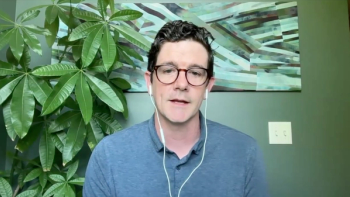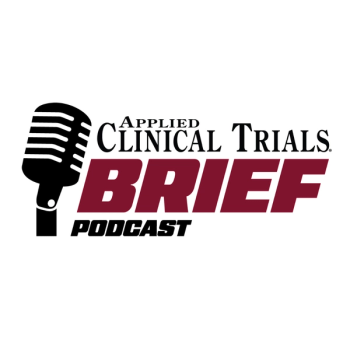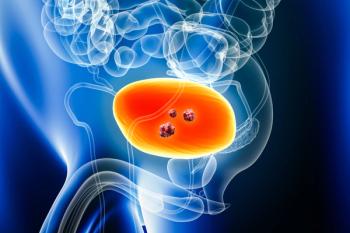
In this video interview, Sunny Kumar, MD, partner at Informed Ventures, explains how high upfront costs and limited proof of cost savings are slowing large-scale adoption of decentralized clinical trial models.

In this video interview, Sunny Kumar, MD, partner at Informed Ventures, explains how high upfront costs and limited proof of cost savings are slowing large-scale adoption of decentralized clinical trial models.

Craig Lipset, co-chair, Decentralized Trials & Research Alliance (DTRA), and Kyle McAllister, co-founder, CEO, Trially, discuss how research sites are navigating political funding pressures, adapting to NIH budget constraints, and leveraging new cost-containment strategies to sustain clinical research.

The FDA will now publish adverse event data from FAERS on a daily basis, marking a major step toward greater transparency in drug development.

In this episode of the Applied Clinical Trials Brief, we recap our three most-viewed stories of the week—covering the Supreme Court’s decision to uphold NIH funding cuts tied to DEI, Phase II data showing oral VK2735 achieved over 12% weight loss, and Phase III results where Padcev plus Keytruda improved survival in muscle-invasive bladder cancer.

This explainer unpacks how recent US policy shifts are reshaping diversity, equity, and inclusion in clinical research, exploring the ripple effects on patients, sites, sponsors, and investigators.

The Supreme Court has ruled 5-4 to allow the Trump administration’s NIH funding cuts to continue, impacting more than 1,700 medical research grants in areas including heart disease, HIV/AIDS, Alzheimer’s disease, and mental health.

In this video interview, Caroline Potts, general manager of sites and patient services at Medical Research Network (MRN), explains why trial inclusivity requires shared responsibility across sponsors, CROs, sites, and advocacy groups.

A new exploratory study will evaluate the safety of Anktiva in patients with long COVID, with secondary and exploratory measures focused on immune cell activity and function.

The Denali trial confirmed non-inferiority of NCX 470 to latanoprost in lowering intraocular pressure, with consistent efficacy, favorable safety, and supportive results from the earlier Mont Blanc study.

In this video interview, Caroline Potts, general manager of sites and patient services at Medical Research Network (MRN), highlights how listening to site insights and adopting flexible models such as temporary community-based clinics, can reduce patient travel burdens, improve enrollment efficiency, and stretch trial budgets further.

In this episode of the Applied Clinical Trials Brief, we spotlight a recent video interview in which Jon Walsh, founder and chief scientific officer of Unlearn.AI, shared how digital twins can improve trial efficiency, enhance patient-centric designs, align with regulatory expectations, and accelerate access to new therapies.

In this episode of the Applied Clinical Trials Brief, we spotlight a recent video interview in which Jon Walsh, founder and chief scientific officer of Unlearn.AI, shared how digital twins can improve trial efficiency, enhance patient-centric designs, align with regulatory expectations, and accelerate access to new therapies.

An overview of how recent funding reductions are reshaping clinical trial operations, from site sustainability and patient recruitment to trial design and long-term strategy.

In this video interview, Caroline Potts, general manager of sites and patient services at Medical Research Network (MRN), outlines how rigid budgeting and limited sponsor-site dialog often block innovative patient-centric solutions, stressing the need for more collaborative approaches to enable community engagement and flexible trial delivery.

In this video interview, Caroline Potts, general manager of sites and patient services at Medical Research Network (MRN), explains why site-enabled approaches such as in-home visits and community-based outreach should be offered from the start of a trial to reduce recruitment delays, support patient needs, and improve trial diversity.

The first patient has been dosed in a global Phase II study assessing Hepzato in combination with trifluridine-tipiracil and bevacizumab for liver-dominant metastatic colorectal cancer, with primary results expected by mid-2028.

The Phase II VENTURE-Oral Dosing study of VK2735 met primary and secondary endpoints, with once-daily treatment leading to progressive weight reductions, high responder rates, and encouraging safety over 13 weeks.

In this video interview, Caroline Potts, general manager of sites and patient services at Medical Research Network (MRN), discusses the challenges of achieving true operational flexibility in clinical trials—highlighting how SOPs, staffing, and budget constraints often limit site adaptability and contribute to staff burnout.

The FDA has awarded Breakthrough Therapy Designation to izalontamab brengitecan, a potential first-in-class bispecific antibody-drug conjugate, for patients with EGFR-mutated advanced or metastatic non-small cell lung cancer who progressed after EGFR TKI and platinum chemotherapy, based on data from multiple clinical trials.

In this episode of the Applied Clinical Trials Brief, we recap our three most-viewed articles of the week—featuring updated cost estimates for trial delays, the benefits of a hybrid approach to site payments, and strategies for keeping complex protocols on track.

In the Phase II STARLIGHT trial, MCO-010 gene therapy improved visual acuity in Stargardt disease patients, with some achieving early and sustained gains and no serious adverse events, paving the way for a Phase III study.

In this video interview, Meri Beckwith, Co-CEO of Lindus Health, shares practical ways clinical teams can strengthen trial protocols for expedited programs—such as incorporating control groups where possible, leveraging synthetic and real-world data, and adopting adaptive trial designs to reduce regulatory risk.

In this randomized, double-blind trial, Aligos Therapeutics is evaluating its investigational oral capsid assembly modulator ALG-000184 against tenofovir disoproxil fumarate in 200 treatment-naïve patients with chronic HBV infection, with interim results expected in 2026 and topline data in 2027.

In this Q&A, Rohit Nambisan, CEO of Lokavant, and Jonathan Crowther, head of predictive analytics, Pfizer, explore how AI is transforming study feasibility, regulatory review, and trial execution.

In this video interview, Meri Beckwith, Co-CEO of Lindus Health, discusses whether recent trial design rejections signal a broader shift in FDA expectations or simply reflect changes in individual reviewers, emphasizing that current unpredictability may be more situational than systemic.

In this episode of the Applied Clinical Trials Brief, we spotlight a recent video interview with Luke Wilson of Thermo Fisher Scientific in which he shared insights on how data visibility, remote monitoring, and integrated systems can streamline inspections, improve patient safety, and keep decentralized trials compliant and on track.

In this video interview, Meri Beckwith, Co-CEO of Lindus Health, explains why sponsors pursuing breakthrough or priority review designations must maintain rigorous trial design while building organizational agility.

In the Phase III VAYHIT2 trial, ianalumab combined with eltrombopag significantly prolonged time to treatment failure and improved sustained platelet counts in patients with primary immune thrombocytopenia previously treated with corticosteroids, with a safety profile consistent with prior findings.

In this Phase III trial, the Padcev-Keytruda combination used as both neoadjuvant and adjuvant therapy significantly improved event-free and overall survival, as well as pathologic complete response, compared to surgery alone in cisplatin-ineligible patients with muscle-invasive bladder cancer.

In this video interview, Meri Beckwith, Co-CEO of Lindus Health, discusses recent Complete Response Letters issued to Replimune and Capricor, explaining how shifts in FDA reviewers can affect single-arm trial acceptance, especially in oncology settings where control groups may be deemed unethical.